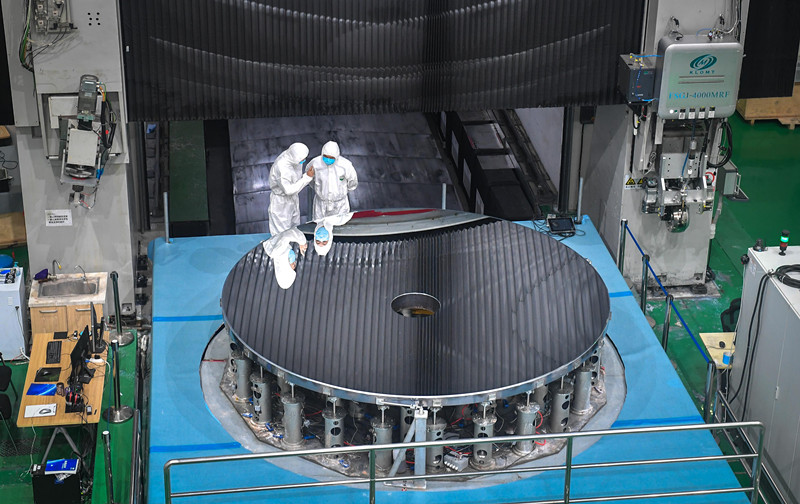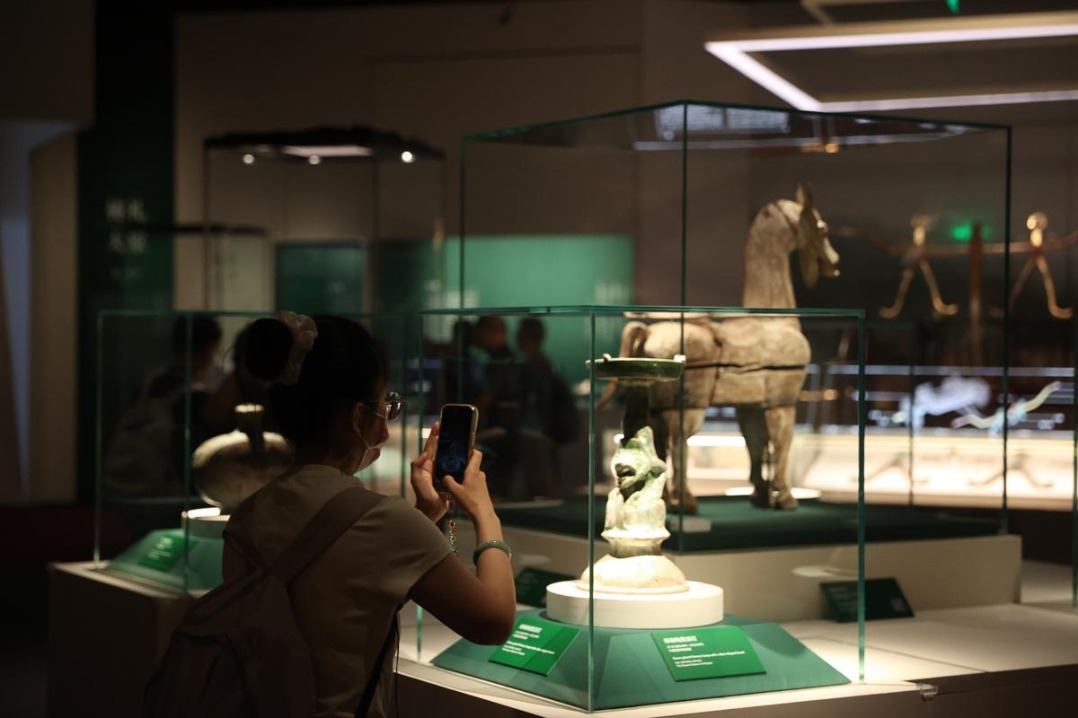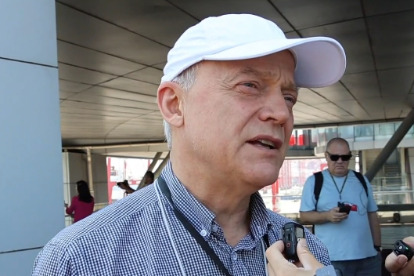High-tech mirror holds promise as key advance


Institute develops new method for making large telescope parts
The Changchun Institute of Optics, Fine Mechanics and Physics, a subsidiary of the Chinese Academy of Science, has developed the world's largest silicon carbide mirrora key component of telescopesand will apply it to some major projects, including space observation.
The project passed its final evaluation by the academy and other experts on Tuesday and the technology will soon be applied to some State-level electrooptical systems, the institute said.
It also helps solve some major technical problems in developing large-scale optical systems for space research, it said.
The mirror, with a diameter of 4.03 meters, is more stable and lighter than a glass mirror, and has a high-precision surface, making it ideal for use as the primary mirror in a telescope, researcher Zhang Xuejun of the institute said.
"The successful manufacturing of the mirror helps strengthen our ability in producing equipment to solve the country's strategic needs, and marks a technological advance in high-end optical manufacturing," Zhang said.
The project, with its independent intellectual property, also helps form an integrated system for the manufacture of large-scale, highly precise silicon carbide mirrors, and is expected to be able to provide solid technical support for disaster prevention, mitigation and emergency response.
An aspheric, or parabolic, mirror is a concave surface that is a core component in telescopes, lasers and other lighting applications. The larger the diameter of a mirror, the more light can be gathered and the better the resolution of the telescope.
Silicon carbide, the material that the institute used, is considered promising when compared with conventional optical materials like glass because of its low density, high degree of hardness and its low thermal expansion properties.
"A silicon carbide mirror can be one-fourth the weight of a glass mirror the same size, and it's more adaptable to changes in surrounding temperature, which will save costs. It will remain stable when installed on equipment used in space," said Luo Xiao, deputy director of the mirror's processing unit.
Zhang, who is also the manager of the project, said the manufacturing of large-scale silicon carbide mirrors had remained a challenge globally, as it had been believed that the diameter could not exceed 1.5 meters.
"The sintering, milling, polishing and high-precision testing were all tough technologies to acquire, and it often takes six to eight months to sinter one mirror," he said.
Zhang said researchers had failed four times before the mirror was finally bonded in a single piece.
The project was initiated by the academy in 2009, but Zhang said related research had been underway since 2003.
After hundreds of experiments, the research team managed to develop a 1.5-meter mirror, followed by diameters of 2 meters and 3 meters. Last year, the team successfully developed the world's largest mirror blank, the rudimentary mirror before coating.
"Now from making mirror blanks to high-precision optical processing, we have developed an integrated manufacturing system that is sure to improve our country's core technology and high-end scientific research," Zhang said.
- Visitors flock to Shanxi's Hundred-Regiment Campaign memorial hall
- Rare wild plant species reappears in China's Heilongjiang after 3 decades
- Flash flood displaces hundreds in Xizang
- Chinese scientists develop novel 'marshmallow' concrete to gently stop aircraft during emergency landings
- China achieves substantial reduction in degraded grasslands
- Xi, Bolivian president exchange congratulations on 40th anniversary of diplomatic ties





































